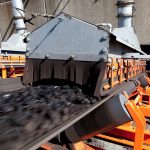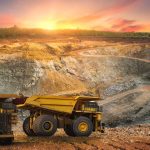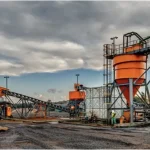Following international climate change commitments to reduce carbon emissions, many countries are now starting to plan the practical details of how they will achieve their goals. SRK Consulting recently researched the carbon footprint of commodities and how the mining sector plans to reduce it.
Decarbonisation is rapidly picking up momentum as companies and countries grapple with how to achieve carbon neutrality. New initiatives are being announced frequently and innovative approaches are being developed rapidly. While some are sure to fail, the pace of development and increased investment is likely to lead to some important breakthroughs.
These commitments are likely to increase the focus of mining companies on reducing their carbon emissions to align with the efforts being made by their customers to meet climate change targets. Mining has traditionally been a significant user of energy, so it is not surprising that it falls under the microscope when countries look to reduce their carbon footprint. This is particularly relevant for South Africa, where the electrical energy consumed by mines is predominantly generated by coal-fired power stations.
Contribution of mining towards greenhouse gas emissions
Indeed, 15% of global energy demand is used for metal extraction in mining, mineral processing, smelting and refining processes. Interestingly, only 1,4% is consumed in mining and mineral processing, while smelting and refining take the lion’s share of 13,6%. Consequently, mining and smelting also contribute significantly to the world’s greenhouse gas (GHG) emissions – at some 9% of carbon dioxide emissions. Again, a relatively small portion of just 1,8% is from mining and mineral processing, while 7,2% is from smelting and refining. Within the sub-category of mining and processing, comminution is the most energy-intensive process, demanding over a third of all on-site energy on average.
Apart from the electricity used in running mining operations, other important sources of carbon emissions on mines include diesel for ore transport or mobile machinery, and explosives for fracturing rock – although the latter produces relatively low levels of emissions.
What is now of growing interest to large consumers of commodities are the plans that mines have in place to cut their emissions – as well as the progress to date that might suggest how successful these plans will be. These forecasts are important as they provide the stepping stones for nations and their corporations – to chart a realistic trajectory of their own carbon future. In essence, consumers and their host countries will be looking to the mining sector for a considerable portion of their carbon “savings” in the years to come.
In terms of a mitigation hierarchy, mines will be expected to firstly, avoid as much emissions as possible by designing it out of their operations even before construction begins. Secondly, they must eliminate emissions as far as possible by switching to renewable sources of power. Thirdly, there must be ongoing efforts to reduce energy consumption – and hence emissions – by improving efficiencies across a range of activities related to mineral extraction. And finally, those remaining carbon emission levels will need to be offset by investment and initiatives in options like tree planting.















